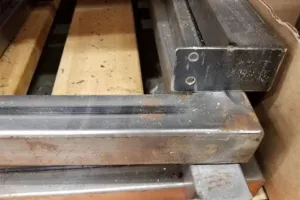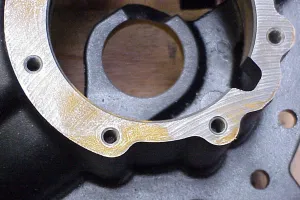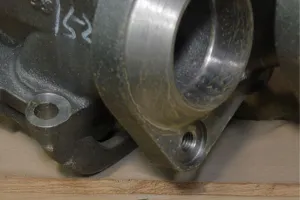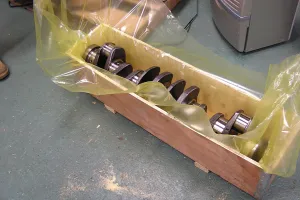 When it comes to shipping and storing valuable metal components, wood packaging and pallets are often the default choice. But while wood is sturdy and economical, research shows that wood causing corrosion and pallets causing corrosion are real and costly risks. Under the right conditions, wooden pallets and crates accelerate the corrosion of metals, leading to rust, staining, and even structural failure.
When it comes to shipping and storing valuable metal components, wood packaging and pallets are often the default choice. But while wood is sturdy and economical, research shows that wood causing corrosion and pallets causing corrosion are real and costly risks. Under the right conditions, wooden pallets and crates accelerate the corrosion of metals, leading to rust, staining, and even structural failure.
ZERUST®/EXCOR® offers a simple solution: remove your parts from direct wood contact and protect them with VCI (Vapor Corrosion Inhibitor) poly packaging. Here’s what the science says, and why ZERUST® packaging is the better choice.
Why Wood and Pallets Are Causing Corrosion
1. Moisture Content is Critical
Wood absorbs moisture from its environment. Once its moisture content exceeds 15–18%, it enables electrochemical corrosion of metals. Below this threshold, corrosion is negligible, but above it, the rate increases dramatically². This is one of the leading causes of wood causing corrosion in metal parts stored or shipped on pallets.
2. Copper-Based Wood Treatments Make Pallets More Corrosive
Modern pallets are often treated with preservatives like alkaline copper quaternary (ACQ) or copper azole (CA). These preservatives contain copper ions, which migrate through moist wood and accelerate oxidation of steel and galvanized fasteners³. In practice, this means that pallets causing corrosion is not just a theory; it’s a documented outcome.
3. Wood Chemistry Adds to the Problem
Even untreated wood can release organic acids such as acetic and formic acid. These lower the pH around metals and increase corrosion rates. Some woods contain tannins, which can either inhibit or accelerate corrosion depending on conditions, but lower pH consistently increases steel corrosion⁴.
4. Scientific Testing Confirms the Risk
Both long-term exposure studies and accelerated lab tests confirm that galvanized steel corrodes faster than plain carbon steel when in contact with treated wood, especially under high moisture. The evidence for wood and pallets causing corrosion is consistent across multiple studies¹.
The Hidden Cost of Wood Packaging
The risks of pallets causing corrosion translate directly to:
- Rusted or stained parts upon arrival.
- Loss of mechanical strength in assemblies.
- Customer dissatisfaction and warranty costs.
Wood pallets are strong for transport, but unpredictable in a corrosive environment.
How ZERUST® VCI Poly Packaging Solves the Problem
ZERUST® VCI poly films and bags eliminate the uncertainty by creating a controlled microenvironment around your parts:
- Stops Wood Causing Corrosion: By isolating metal parts from wooden pallets, VCI packaging prevents acids, tannins, and copper ions from ever contacting components.
- Protects Against Moisture: ZERUST® films buffer against humidity changes, reducing the moisture swings that drive corrosion.
- Proven VCI Technology: Safe, invisible VCI molecules settle on metal surfaces and interrupt the corrosion reaction.
- Trusted Globally: For over 50 years, ZERUST® has been the choice for manufacturers across automotive, aerospace, and heavy equipment industries.
Scientific studies confirm what many manufacturers know: wood causing corrosion and pallets causing corrosion are real threats in metal storage and shipping.
The good news is you don’t need to abandon wood pallets; you just need to shield your parts. With ZERUST® VCI poly packaging, you can keep the logistical benefits of wood while eliminating the corrosion risk.
Protect your shipments. Protect your reputation. Choose ZERUST® VCI packaging.
Sources
- Zelinka, S.L. & Stone, D.S. Corrosion of metals in wood: Comparing the results of a rapid test method with long-term exposure tests across six wood treatments. Corrosion Science, 2011.
- Zelinka, S.L. Corrosion of Metals in Wood Products. In Developments in Corrosion Protection, InTech, 2014.
- Zelinka, S.L. Guide for Materials Selection and Design for Metals Used in Contact with Copper-Treated Wood. USDA Forest Products Laboratory, GTR–227, 2013.
- Zelinka, S.L. & Stone, D.S. The Effect of Tannins and pH on the Corrosion of Steel in Wood Extracts. Materials and Corrosion, 2011.

